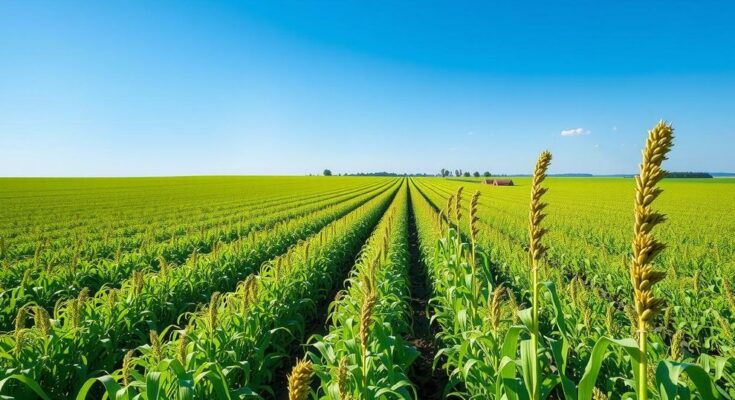The report assesses sorghum production in Sudan for the 2024/25 season, focusing on Gedaref, White Nile, Blue Nile, and New Halfa irrigation scheme in Kassala. Analysis employed satellite data and yield data from crop cuts, revealing better than expected crop conditions. Key findings indicate increased sorghum planted areas in some states, average productivity of approximately 0.9 t/ha, and a total production estimate of 2.65 million tons across the states.
This report provides an assessment of sorghum production across selected states in Sudan for the 2024/25 growing season. The focus is on Gedaref, White Nile, Blue Nile, and the New Halfa irrigation scheme in Kassala, which are known for their significant sorghum yields. Sorghum serves as Sudan’s staple crop, recognized for its durability as it can be safely stored in underground pits called Matmuras for over a year.
Our methodology involved the utilization of satellite data to map the areas planted with sorghum, analyzing the peak normalized difference vegetation index (Peak-NDVI) in relation to yield data collected through crop cuts. A regression line derived from this analysis was subsequently applied to estimate coverage across all sorghum fields.
Key findings from the report reveal that crop conditions were unexpectedly favorable despite the challenges faced by farmers in the previous year. Notably, the area planted with sorghum in Gedaref for the 2023/24 season increased slightly from the previous year and exceeded the long-term averages in White Nile and Kassala, while the Blue Nile region experienced a decline.
In Kassala, the estimated area for sorghum cultivation was recorded at 734,000 hectares. The average productivity of rainfed sorghum for the 2024/25 season was approximately 0.9 tons per hectare. The overall estimated sorghum production for the season is projected at 2.65 million tons, with state-wise breakdowns as follows: Gedaref (1.57 million tons), White Nile (0.70 million tons), Blue Nile (0.31 million tons), and New Halfa irrigation scheme in Kassala (0.07 million tons).
In conclusion, the assessment of the 2024/25 sorghum production highlights significant insights into the performance of this vital crop in Sudan. The favorable climatic conditions and increased planting area are promising indicators for the agricultural prospects in Gedaref and surrounding regions. However, the production estimates reveal the variations in yield and area coverage, which are critical for addressing food security and economic stability in the country.
Original Source: www.cgiar.org




